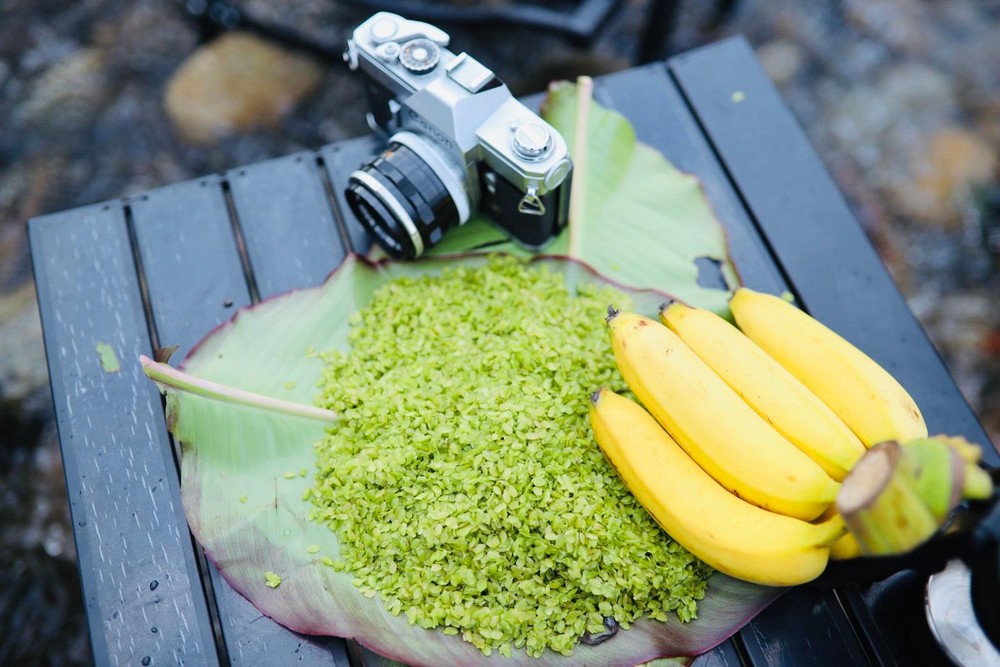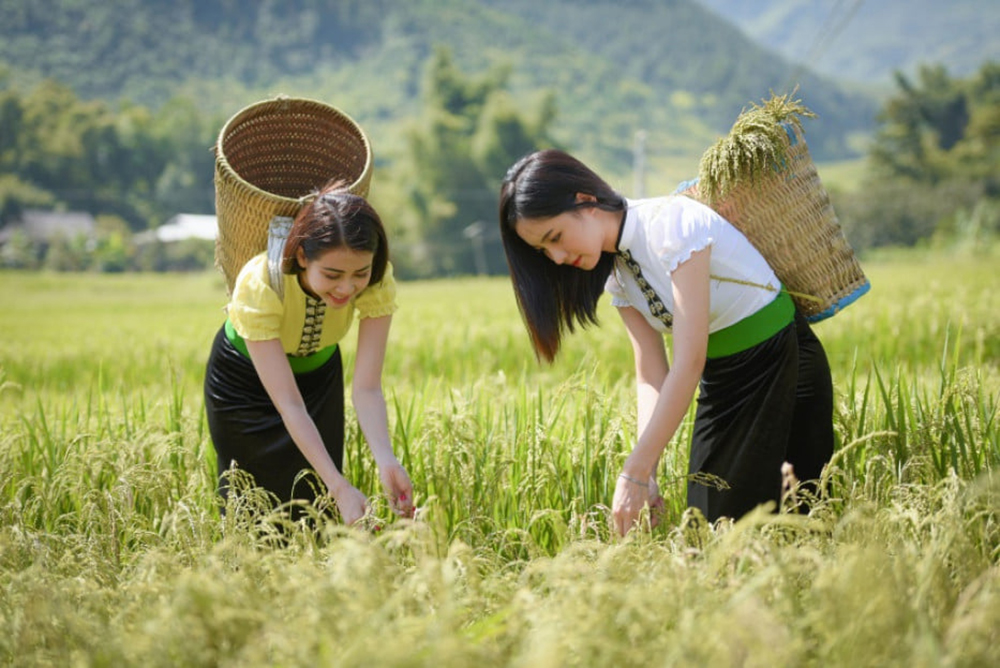Cốm Tú Lệ
Origin and Cultural Significance
Cốm Tú Lệ is a traditional Vietnamese delicacy originating from Tú Lệ Commune, located in Văn Chấn District, Yên Bái Province, in the northwestern highlands of Vietnam. Surrounded by majestic rice terraces and cool mountain air, Tú Lệ is home to the Thái ethnic people, who have perfected the art of making green rice flakes over generations.
Cốm is more than just a seasonal treat — it’s a symbol of the autumn harvest, cultural pride, and the deep connection between the people and their land.
What Makes It Special
What sets Tú Lệ cốm apart from others (such as the more widely known cốm làng Vòng from Hanoi) is the unique glutinous rice variety grown in this region, which benefits from:
-
Clean mountain water
-
Fertile, terraced fields
-
Mild, cool climate year-round
The resulting rice has a distinct aroma, a natural sweetness, and a soft yet chewy texture that’s unmatched elsewhere.
Ingredients and How It’s Made
The main (and only) ingredient is young sticky rice (nếp non), but the process of making cốm is delicate and highly labor-intensive:
-
Harvesting: The rice is picked while still green, before it matures fully.
-
Roasting: The grains are gently roasted in a pan over low fire to maintain their aroma and green color.
-
Pounding: The roasted rice is placed in a wooden mortar and pounded by hand using large wooden pestles until the husk separates.
-
Winnowing: The husk is removed by sifting and tossing in the wind.
-
Finishing: The result is soft, flat green flakes with a sweet, nutty fragrance.
This process must be done entirely by hand, often starting before dawn to preserve the freshness and flavor.
How to Enjoy It
Tú Lệ cốm is best eaten fresh. There are many traditional ways to enjoy it:
-
Plain, wrapped in lotus leaves to retain aroma
-
Mixed with shredded coconut and sugar for a quick snack
-
Eaten with ripe bananas
-
Used as an ingredient in cốm cakes (bánh cốm), cốm sweet soup (chè cốm), or fried sticky rice patties
Its light sweetness and fragrant chewiness make it perfect for an afternoon snack or a festival treat.
When and Where to Find It
-
Best season: Mid-September to early October (during the rice harvest)
-
Where to buy: Local markets in Tú Lệ, Mù Cang Chải, or Yên Bái City. Some families also sell it to visitors right from their homes.
If you're lucky enough to visit Tú Lệ in the fall, you’ll see families making cốm in the early morning mist, a sight as special as the food itself.
Why You Should Try It
Cốm Tú Lệ is more than just food — it’s a reflection of Vietnamese rural craftsmanship, seasonal tradition, and mountain culture. Eating it allows you to taste the care and love that the local people put into cultivating their land. It’s a simple, humble dish that speaks volumes about the richness of Vietnam’s northern highlands.



